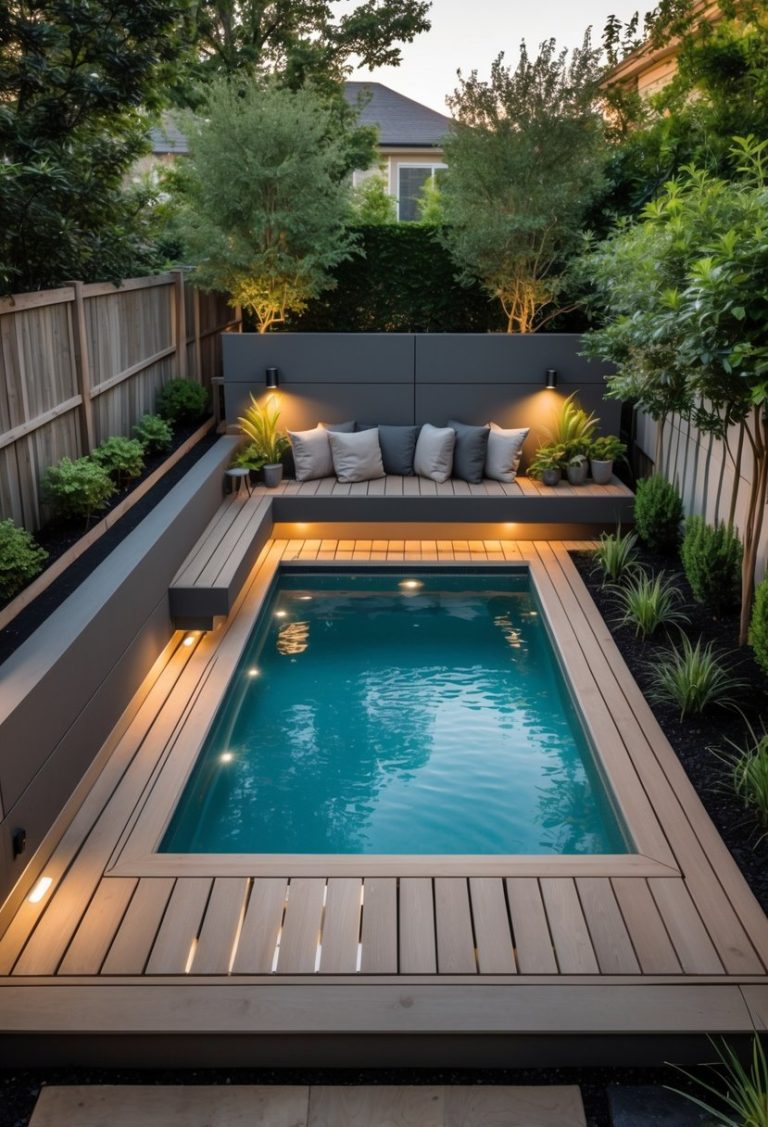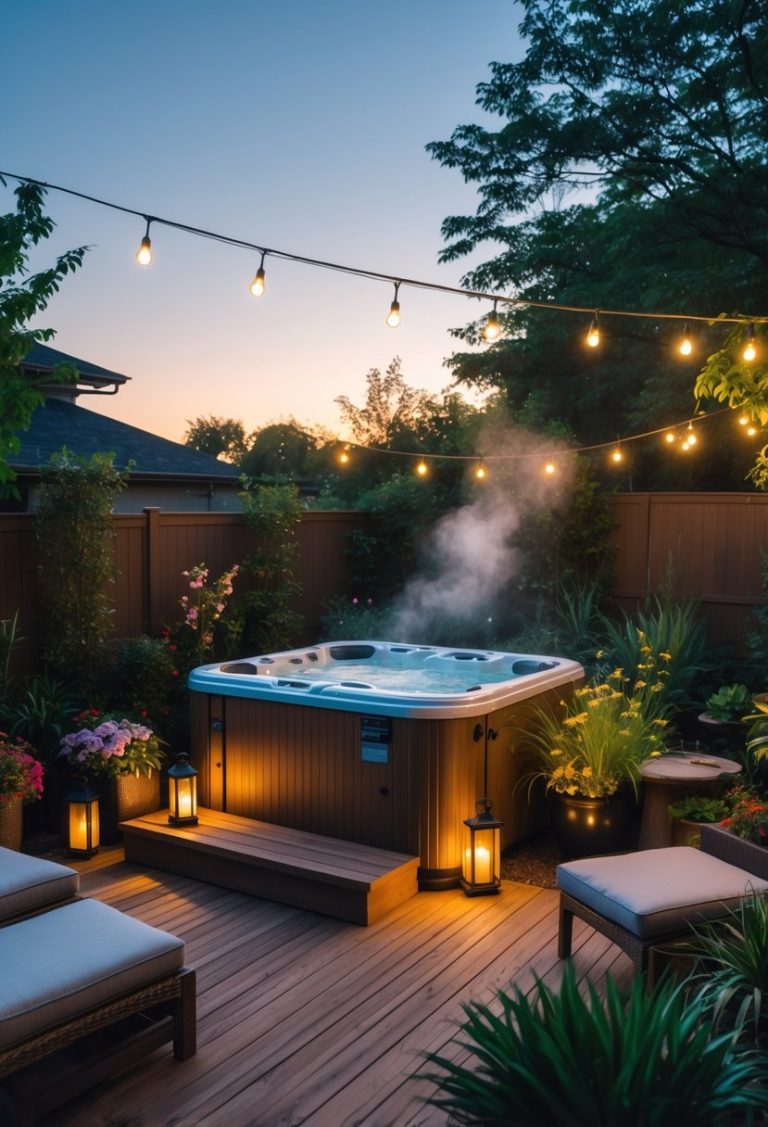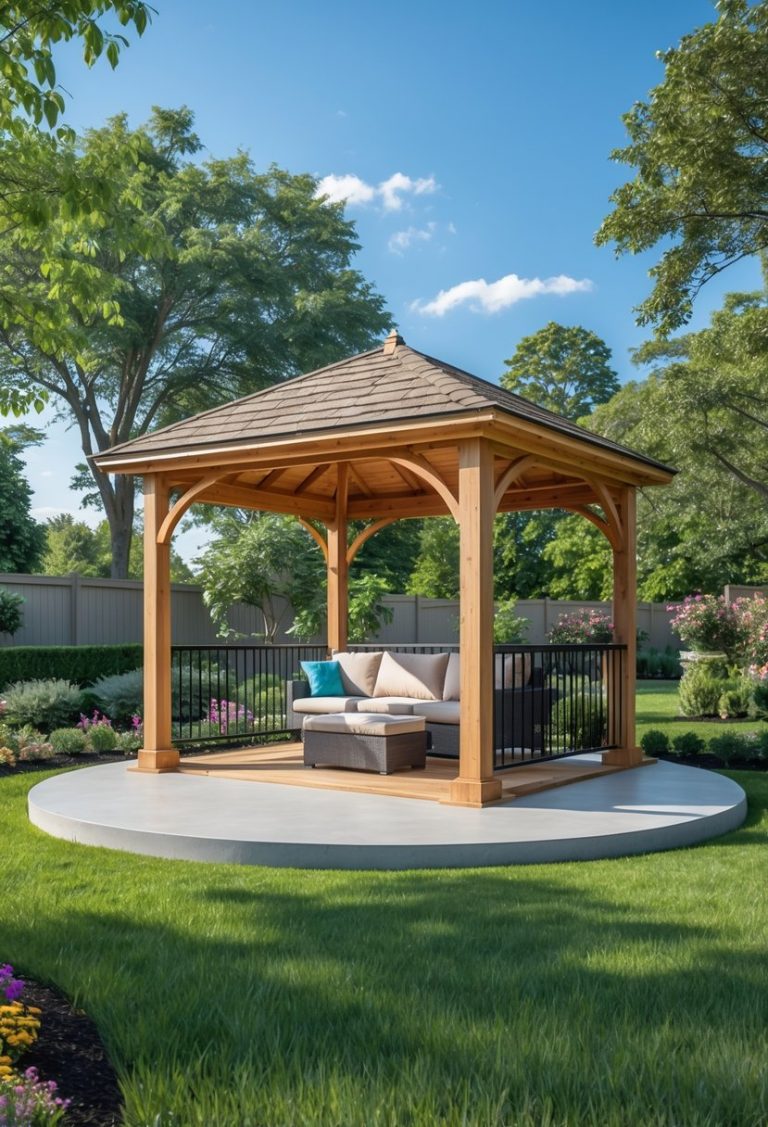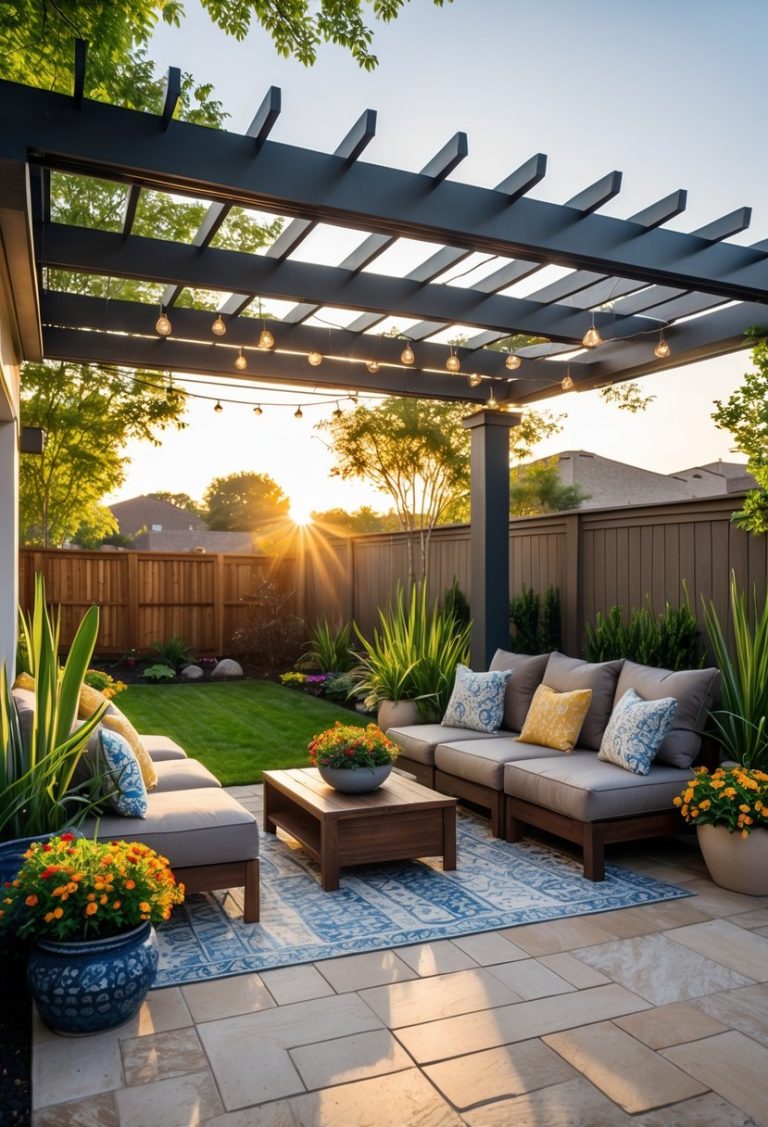Backyard Fence Ideas: 7 Stylish and Practical Designs to Increase Your Privacy & Security
A backyard fence can change the look and feel of an outdoor space. It adds privacy, security, and style while defining property boundaries. When choosing a fence, a person should consider how it fits with their yard’s design and purpose.

Backyard fence ideas help homeowners find the right balance between function and appearance for their outdoor spaces. Different materials, styles, and heights offer many options to match any yard. This guide will help explore those possibilities.
1) Bamboo Fence with Concrete Base

A bamboo fence with a concrete base offers strong support and stability. The concrete helps keep the bamboo upright and prevents it from shifting over time.
This combination works well for areas with wind or uneven ground. The concrete base also protects the bamboo from moisture at the bottom, which can extend the fence’s life.
2) Modern Metal Mesh Fence

A modern metal mesh fence offers a sleek, functional option for yards. It provides security while allowing visibility and airflow.
This type of fence fits well with contemporary home designs. It is low-maintenance and durable in various weather conditions.
3) Vertical Garden Privacy Fence

A vertical garden privacy fence adds greenery while blocking views. It uses the fence as a support for climbing plants or hanging planters. This design improves privacy and brings natural beauty to the yard. It is a good choice for small spaces or anyone wanting to combine function and style.
4) Classic Picket Fence with Flowerpots

A classic white picket fence adds a neat, timeless look to any backyard. Attaching flowerpots to the fence enhances its charm with bright colors and natural beauty.
Flowerpots with blooming flowers create a cheerful atmosphere. This simple addition frames the garden and makes the space more inviting.
5) Split-Rail Fence for Rustic Charm

A split-rail fence adds a simple, natural look to any backyard. Its open design keeps the space feeling large while marking boundaries clearly.
This type of fence works well with gardens or paths, guiding visitors without blocking views. Wooden rails can be sealed to protect against weather and maintain their appearance.
6) Tall Wooden Privacy Fence

A tall wooden privacy fence uses vertical wooden boards placed close together. This design blocks views and creates a secure boundary around the yard. It is simple and effective for keeping the area private.
Wood fences come in different styles, such as solid boards or horizontal slats. They offer a natural look and can fit many backyard designs.
7) Horizontal Slat Fence with Planters

A horizontal slat fence with planters adds both style and function to a backyard. It creates a clean, modern look while allowing space for plants.
Planters can hold flowers, herbs, or small shrubs. This feature brings greenery closer and softens the fence’s appearance.
The design works well for small yards. It maximizes space without blocking light or airflow.
Essential Design Considerations

Choosing the right backyard fence means balancing strong materials with thoughtful privacy and security features. Both the type of fence and how it is built affect how well it lasts and how safe the yard remains.
Materials and Durability
Fence material impacts how long it will last and how much upkeep it needs. Common options include wood, vinyl, metal, and composite. Wood offers a natural look but needs regular sealing or painting to prevent rot and insect damage.
Vinyl is low-maintenance and resists weather well but can be less sturdy in strong winds. Metal fences, like wrought iron or aluminum, are strong and durable but may need rust protection. Composite blends durability with low maintenance.
Climate should guide material choice. For example, wood may not hold up in very wet areas without extra care. Also consider if the material fits the home’s style and the budget.
Privacy and Security Factors
Privacy fences typically need to be at least 6 feet tall to block views effectively. Solid panels or closely spaced boards keep neighbors from seeing in. Designs like lattice tops add style while maintaining privacy.
Security involves more than height. The fence should be sturdy enough to deter climbing or damage. Features like locked gates, reinforced posts, and smooth tops help.
Consider local rules about fence height and placement. Proper installation is key to ensuring the fence does not have weak points that compromise safety or privacy.
Maintenance and Care Tips

Proper cleaning and protecting methods help fences last longer and keep them looking good. Regular attention to dirt, mold, and weather damage is key. The following details focus on practical ways to clean and weatherproof different types of fences.
Routine Cleaning Methods
Cleaning fences regularly removes dirt, mildew, and debris that can cause damage over time. For most fences, a simple mix of water and mild soap works well. Use a soft brush or sponge to scrub the surface gently.
Wood fences benefit from removing mold and algae with a diluted bleach solution (one part bleach to four parts water). Rinse thoroughly afterward to avoid lasting damage. Metal fences can be cleaned with soap and water or a specialty cleaner to prevent rust buildup.
Cleaning once or twice a year is usually enough unless the fence is near trees or areas prone to dirt. Power washing is an option but should be used carefully on wood to avoid splintering.
Weatherproofing Strategies
Protecting a fence from rain, sun, and cold is vital to prevent warping or rust. Wood fences should be sealed with a high-quality stain or sealant every two to three years. These products block moisture and UV rays, helping maintain color and strength.
Metal fences need rust-resistant paint or coatings. If rust spots appear, sanding and repainting promptly will stop them from spreading.
Adding a clear water repellent can help both wood and metal fences shed water. Homeowners should check fences after harsh weather and fix any damage quickly to avoid bigger problems.





